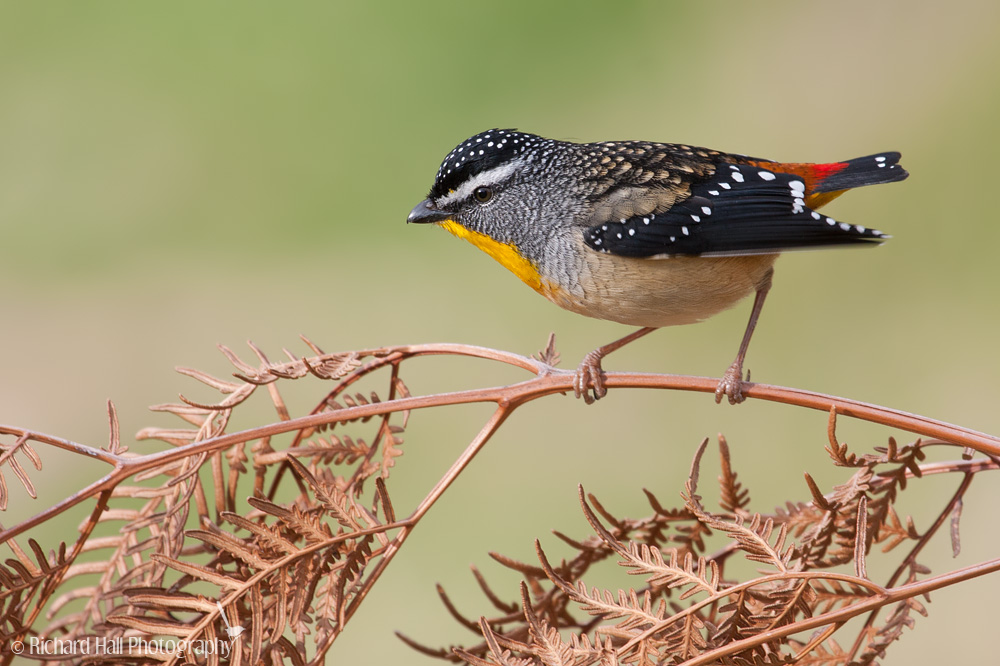
Pardalotus punctatus
TAXONOMY
Pardalotus punctatus Shaw, 1792, New Holland (Australia).
Three subspecies.
OTHER COMMON NAMES
English: Diamond bird; bank diamond; French: Pardalote
pointillй German: Fleckenpanthervogel; Spanish: Pardalote
Moetado.
PHYSICAL CHARACTERISTICS
3.5 in (9 cm); 0.32 oz (9g). Sexually dimorphic in plumage: males
have yellow throats and breast.
DISTRIBUTION
Australia. P. p. punctatus: coastal belt from southern Queensland
to eastern South Australia and southwestern West Australia and
in Tasmania; P. p. millitaris: coastal belt of north central
Queensland; P. p. xanthopygae: mallee and mulga areas of Victoria
to Western Australia.
HABITAT
Eucalypt forests and woodlands, residential parks and gardens.
P. p. xanthopygae mostly in mallee and mulga woodlands.
BEHAVIOR
Territorial during breeding season, but forms flocks of a dozen
birds or more in winter, and may join mixed species foraging
flocks. Two- or three-note call.
FEEDING ECOLOGY AND DIET
Gleans twigs and foliage for scale insects, and a wide variety of
other invertebrates.
REPRODUCTIVE BIOLOGY
Nest is of plant fibers about 19.7 in (50 cm) in tunnel burrowed
into earthen bank or flat ground, often near a creek.
The usual clutch is three to five white eggs incubated by both
parents; hatching is in 14-16 days, fledging in about a month.
CONSERVATION STATUS
Not threatened, but habitat alteration is a potential threat.
SIGNIFICANCE TO HUMANS
None known.
Other popular Animals
Photo Gallery of - Spotted pardalote
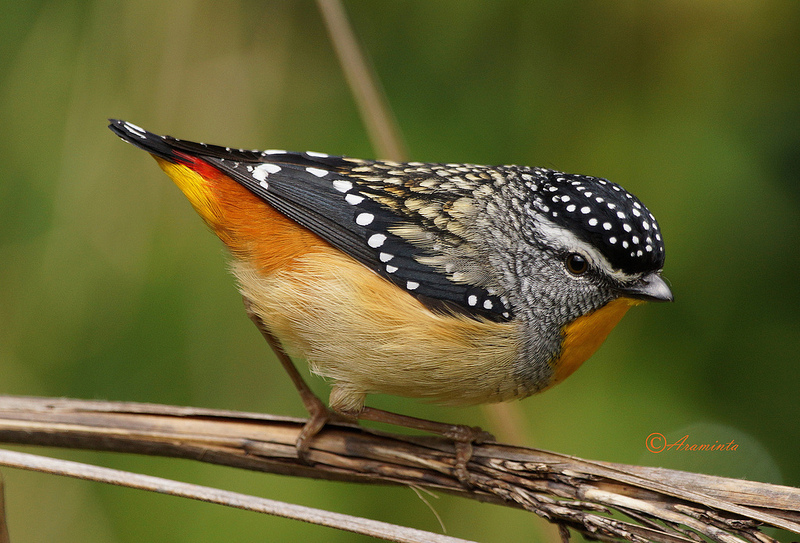
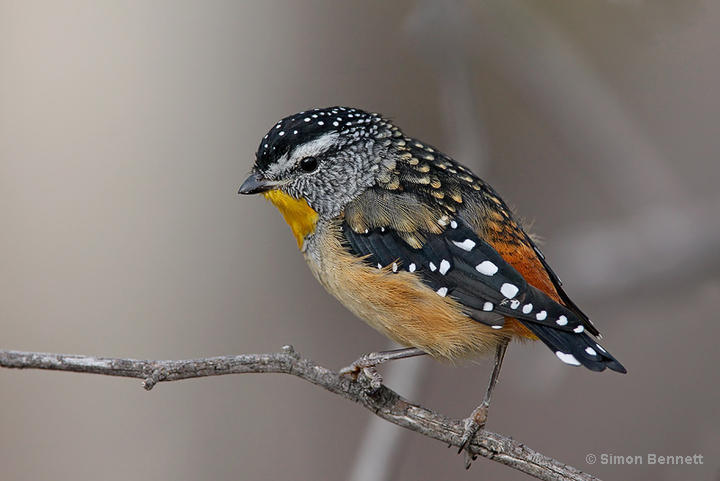
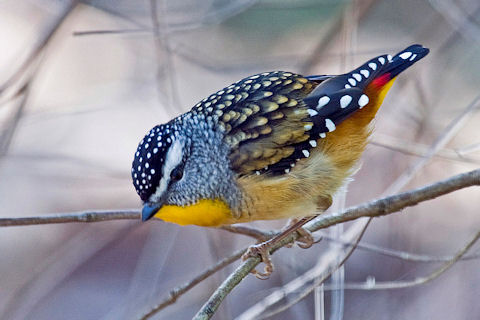
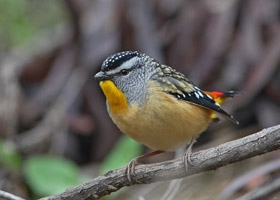
 Animalia Life
Animalia Life